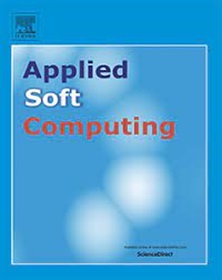住宅用电负荷的超参数空间聚类方法
IF 6.6
1区 计算机科学
Q1 COMPUTER SCIENCE, ARTIFICIAL INTELLIGENCE
引用次数: 0
摘要
住宅用电模式聚类是实现可扩展性和可解释性能源预测的关键一步。传统上,聚类依赖于负荷时间序列的直接分析,这可能会掩盖家庭之间更深层次的行为或结构相似性。本研究引入了一种新颖的方法,将重点从使用原始消费数据转移到使用堆叠一小时前深度学习预测模型的超参数,特别是基于LSTM、Bi-LSTM和GRU架构。通过为每个家庭独立优化模型,并基于所得的超参数配置聚类,我们揭示了在原始数据中并不总是明显的预测行为的功能相似性。这种方法能够形成新的、可解释的消费者细分,这可以支持每个集群量身定制的预测模型的开发。利用来自伦敦200个家庭的三年多的数据,我们评估了提议的基于超参数的聚类与传统的时间序列聚类,应用标准指标和可解释的人工智能技术(SHAP和LIME)来解释结果。研究结果表明,两种方法的平均和中位数消费模式之间具有很强的一致性,验证了所提出方法的有效性。此外,分析还强调了特征转换层在集群形成中起着最关键的作用,强调了其在捕捉潜在消费行为方面的重要性。除了分析价值之外,该方法还提供了一个保护隐私的优势,因为它只需要交换模型超参数,而不需要交换原始消费数据。本文章由计算机程序翻译,如有差异,请以英文原文为准。
A hyperparameter-space clustering methodology of residential electricity loads
Clustering residential electricity consumption patterns is a crucial step toward scalable and interpretable energy forecasting. Traditionally, clustering relies on direct analysis of load time series, which may obscure deeper behavioral or structural similarities between households. This study introduces a novel approach that shifts the focus from using raw consumption data to using the hyperparameters of stacked hour-ahead deep learning forecasting models—specifically based on LSTM, Bi-LSTM, and GRU architectures. By optimizing models independently for each household and clustering based on the resulting hyperparameter configurations, we reveal functional similarities in forecasting behavior that are not always evident in the original data. This method enables the formation of new, interpretable consumer segments, which can support the development of tailored forecasting models per cluster. Utilizing over three years of data from 200 households located in London, we evaluate the proposed hyperparameter-based clustering against traditional time-series clustering, applying standard metrics and explainable AI techniques (SHAP and LIME) to interpret the results. Findings demonstrate a strong alignment between the mean and median consumption patterns of clusters for both approaches, validating the effectiveness of the proposed method. Moreover, the analysis highlights that the feature transformation layers play the most critical role in shaping cluster formation, underscoring its significance in capturing underlying consumption behaviors. Beyond its analytical value, the method also offers a privacy-preserving advantage by requiring only the exchange of model hyperparameters rather than raw consumption data.
求助全文
通过发布文献求助,成功后即可免费获取论文全文。
去求助
来源期刊

Applied Soft Computing
工程技术-计算机:跨学科应用
CiteScore
15.80
自引率
6.90%
发文量
874
审稿时长
10.9 months
期刊介绍:
Applied Soft Computing is an international journal promoting an integrated view of soft computing to solve real life problems.The focus is to publish the highest quality research in application and convergence of the areas of Fuzzy Logic, Neural Networks, Evolutionary Computing, Rough Sets and other similar techniques to address real world complexities.
Applied Soft Computing is a rolling publication: articles are published as soon as the editor-in-chief has accepted them. Therefore, the web site will continuously be updated with new articles and the publication time will be short.
 求助内容:
求助内容: 应助结果提醒方式:
应助结果提醒方式:


